Ivan Habernal
Mining Legal Arguments to Study Judicial Formalism
Dec 12, 2025Abstract:Courts must justify their decisions, but systematically analyzing judicial reasoning at scale remains difficult. This study refutes claims about formalistic judging in Central and Eastern Europe (CEE) by developing automated methods to detect and classify judicial reasoning in Czech Supreme Courts' decisions using state-of-the-art natural language processing methods. We create the MADON dataset of 272 decisions from two Czech Supreme Courts with expert annotations of 9,183 paragraphs with eight argument types and holistic formalism labels for supervised training and evaluation. Using a corpus of 300k Czech court decisions, we adapt transformer LLMs for Czech legal domain by continued pretraining and experiment with methods to address dataset imbalance including asymmetric loss and class weighting. The best models successfully detect argumentative paragraphs (82.6\% macro-F1), classify traditional types of legal argument (77.5\% macro-F1), and classify decisions as formalistic/non-formalistic (83.2\% macro-F1). Our three-stage pipeline combining ModernBERT, Llama 3.1, and traditional feature-based machine learning achieves promising results for decision classification while reducing computational costs and increasing explainability. Empirically, we challenge prevailing narratives about CEE formalism. This work shows that legal argument mining enables reliable judicial philosophy classification and shows the potential of legal argument mining for other important tasks in computational legal studies. Our methodology is easily replicable across jurisdictions, and our entire pipeline, datasets, guidelines, models, and source codes are available at https://github.com/trusthlt/madon.
Is Your Prompt Safe? Investigating Prompt Injection Attacks Against Open-Source LLMs
May 20, 2025
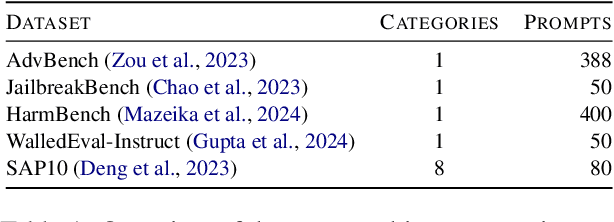

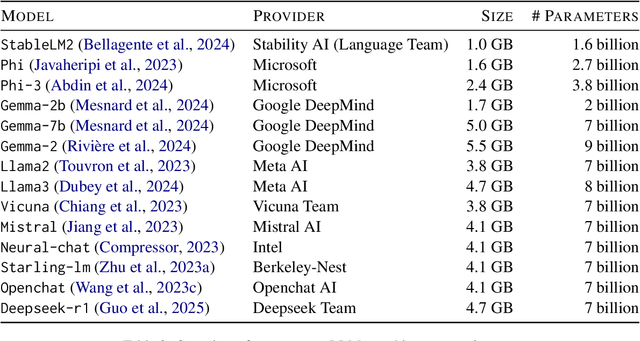
Abstract:Recent studies demonstrate that Large Language Models (LLMs) are vulnerable to different prompt-based attacks, generating harmful content or sensitive information. Both closed-source and open-source LLMs are underinvestigated for these attacks. This paper studies effective prompt injection attacks against the $\mathbf{14}$ most popular open-source LLMs on five attack benchmarks. Current metrics only consider successful attacks, whereas our proposed Attack Success Probability (ASP) also captures uncertainty in the model's response, reflecting ambiguity in attack feasibility. By comprehensively analyzing the effectiveness of prompt injection attacks, we propose a simple and effective hypnotism attack; results show that this attack causes aligned language models, including Stablelm2, Mistral, Openchat, and Vicuna, to generate objectionable behaviors, achieving around $90$% ASP. They also indicate that our ignore prefix attacks can break all $\mathbf{14}$ open-source LLMs, achieving over $60$% ASP on a multi-categorical dataset. We find that moderately well-known LLMs exhibit higher vulnerability to prompt injection attacks, highlighting the need to raise public awareness and prioritize efficient mitigation strategies.
Transparent NLP: Using RAG and LLM Alignment for Privacy Q&A
Feb 10, 2025



Abstract:The transparency principle of the General Data Protection Regulation (GDPR) requires data processing information to be clear, precise, and accessible. While language models show promise in this context, their probabilistic nature complicates truthfulness and comprehensibility. This paper examines state-of-the-art Retrieval Augmented Generation (RAG) systems enhanced with alignment techniques to fulfill GDPR obligations. We evaluate RAG systems incorporating an alignment module like Rewindable Auto-regressive Inference (RAIN) and our proposed multidimensional extension, MultiRAIN, using a Privacy Q&A dataset. Responses are optimized for preciseness and comprehensibility and are assessed through 21 metrics, including deterministic and large language model-based evaluations. Our results show that RAG systems with an alignment module outperform baseline RAG systems on most metrics, though none fully match human answers. Principal component analysis of the results reveals complex interactions between metrics, highlighting the need to refine metrics. This study provides a foundation for integrating advanced natural language processing systems into legal compliance frameworks.
A Comprehensive Survey on Legal Summarization: Challenges and Future Directions
Jan 29, 2025
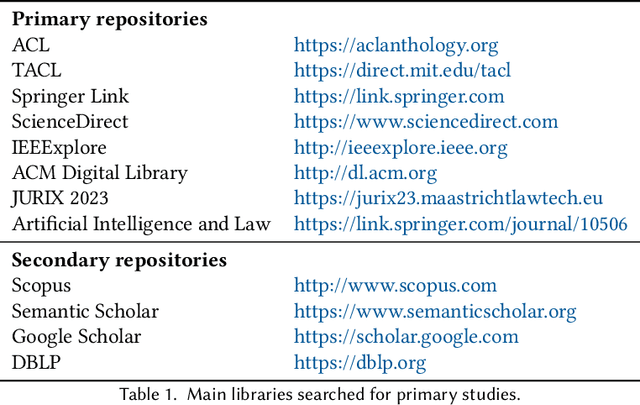


Abstract:This article provides a systematic up-to-date survey of automatic summarization techniques, datasets, models, and evaluation methods in the legal domain. Through specific source selection criteria, we thoroughly review over 120 papers spanning the modern `transformer' era of natural language processing (NLP), thus filling a gap in existing systematic surveys on the matter. We present existing research along several axes and discuss trends, challenges, and opportunities for future research.
Private Synthetic Text Generation with Diffusion Models
Oct 30, 2024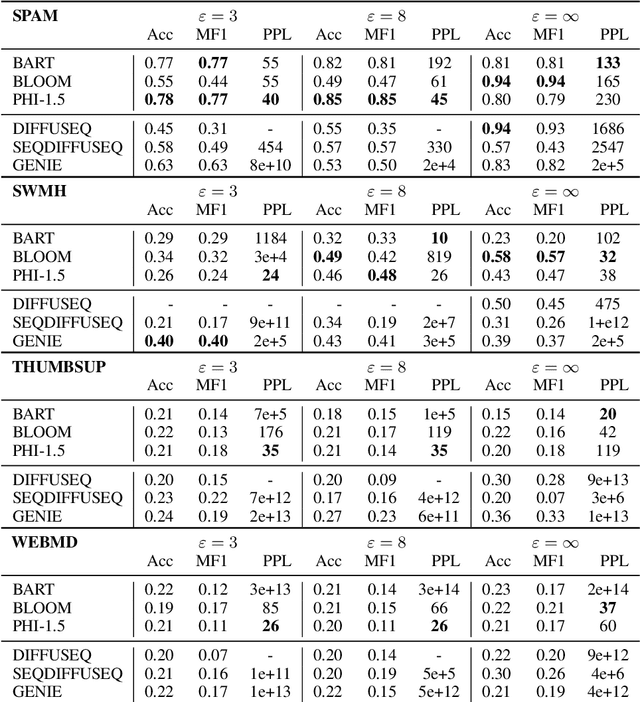
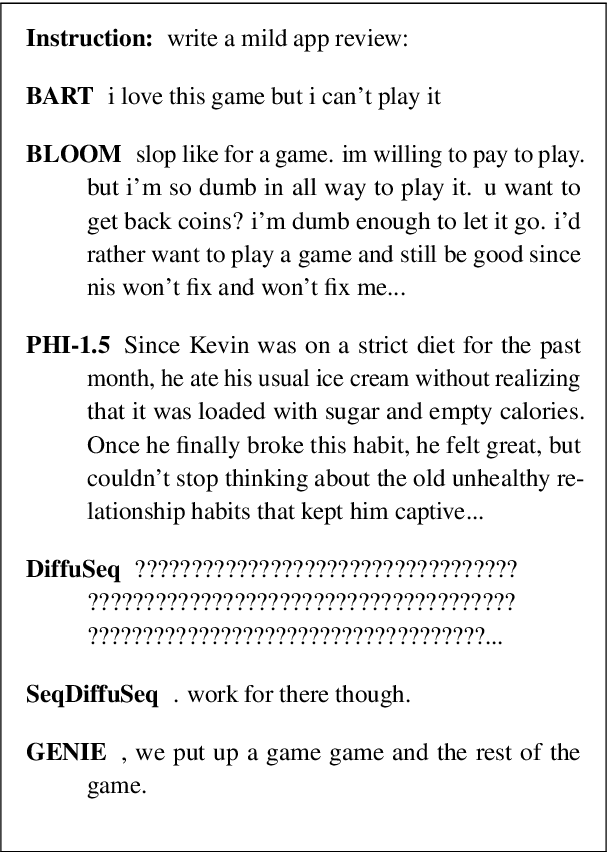
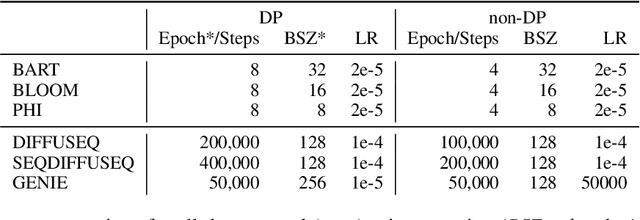
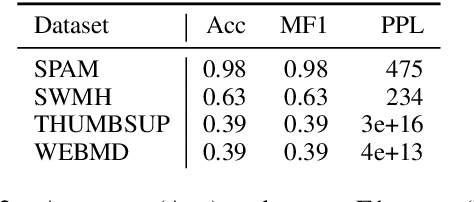
Abstract:How capable are diffusion models of generating synthetics texts? Recent research shows their strengths, with performance reaching that of auto-regressive LLMs. But are they also good in generating synthetic data if the training was under differential privacy? Here the evidence is missing, yet the promises from private image generation look strong. In this paper we address this open question by extensive experiments. At the same time, we critically assess (and reimplement) previous works on synthetic private text generation with LLMs and reveal some unmet assumptions that might have led to violating the differential privacy guarantees. Our results partly contradict previous non-private findings and show that fully open-source LLMs outperform diffusion models in the privacy regime. Our complete source codes, datasets, and experimental setup is publicly available to foster future research.
The Impact of Inference Acceleration Strategies on Bias of LLMs
Oct 29, 2024



Abstract:Last few years have seen unprecedented advances in capabilities of Large Language Models (LLMs). These advancements promise to deeply benefit a vast array of application domains. However, due to their immense size, performing inference with LLMs is both costly and slow. Consequently, a plethora of recent work has proposed strategies to enhance inference efficiency, e.g., quantization, pruning, and caching. These acceleration strategies reduce the inference cost and latency, often by several factors, while maintaining much of the predictive performance measured via common benchmarks. In this work, we explore another critical aspect of LLM performance: demographic bias in model generations due to inference acceleration optimizations. Using a wide range of metrics, we probe bias in model outputs from a number of angles. Analysis of outputs before and after inference acceleration shows significant change in bias. Worryingly, these bias effects are complex and unpredictable. A combination of an acceleration strategy and bias type may show little bias change in one model but may lead to a large effect in another. Our results highlight a need for in-depth and case-by-case evaluation of model bias after it has been modified to accelerate inference.
Private Language Models via Truncated Laplacian Mechanism
Oct 10, 2024
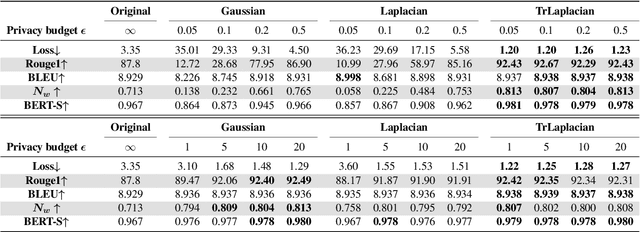
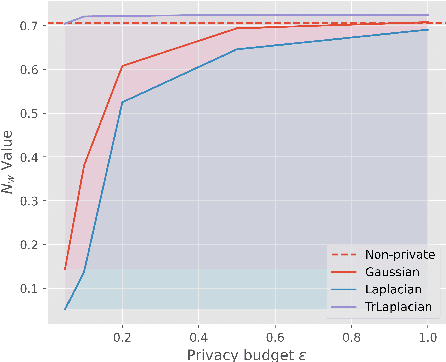

Abstract:Deep learning models for NLP tasks are prone to variants of privacy attacks. To prevent privacy leakage, researchers have investigated word-level perturbations, relying on the formal guarantees of differential privacy (DP) in the embedding space. However, many existing approaches either achieve unsatisfactory performance in the high privacy regime when using the Laplacian or Gaussian mechanism, or resort to weaker relaxations of DP that are inferior to the canonical DP in terms of privacy strength. This raises the question of whether a new method for private word embedding can be designed to overcome these limitations. In this paper, we propose a novel private embedding method called the high dimensional truncated Laplacian mechanism. Specifically, we introduce a non-trivial extension of the truncated Laplacian mechanism, which was previously only investigated in one-dimensional space cases. Theoretically, we show that our method has a lower variance compared to the previous private word embedding methods. To further validate its effectiveness, we conduct comprehensive experiments on private embedding and downstream tasks using three datasets. Remarkably, even in the high privacy regime, our approach only incurs a slight decrease in utility compared to the non-private scenario.
Problem Solving Through Human-AI Preference-Based Cooperation
Aug 15, 2024


Abstract:While there is a widespread belief that artificial general intelligence (AGI) -- or even superhuman AI -- is imminent, complex problems in expert domains are far from being solved. We argue that such problems require human-AI cooperation and that the current state of the art in generative AI is unable to play the role of a reliable partner due to a multitude of shortcomings, including inability to keep track of a complex solution artifact (e.g., a software program), limited support for versatile human preference expression and lack of adapting to human preference in an interactive setting. To address these challenges, we propose HAI-Co2, a novel human-AI co-construction framework. We formalize HAI-Co2 and discuss the difficult open research problems that it faces. Finally, we present a case study of HAI-Co2 and demonstrate its efficacy compared to monolithic generative AI models.
Granularity is crucial when applying differential privacy to text: An investigation for neural machine translation
Jul 26, 2024Abstract:Applying differential privacy (DP) by means of the DP-SGD algorithm to protect individual data points during training is becoming increasingly popular in NLP. However, the choice of granularity at which DP is applied is often neglected. For example, neural machine translation (NMT) typically operates on the sentence-level granularity. From the perspective of DP, this setup assumes that each sentence belongs to a single person and any two sentences in the training dataset are independent. This assumption is however violated in many real-world NMT datasets, e.g. those including dialogues. For proper application of DP we thus must shift from sentences to entire documents. In this paper, we investigate NMT at both the sentence and document levels, analyzing the privacy/utility trade-off for both scenarios, and evaluating the risks of not using the appropriate privacy granularity in terms of leaking personally identifiable information (PII). Our findings indicate that the document-level NMT system is more resistant to membership inference attacks, emphasizing the significance of using the appropriate granularity when working with DP.
LaCour!: Enabling Research on Argumentation in Hearings of the European Court of Human Rights
Dec 08, 2023



Abstract:Why does an argument end up in the final court decision? Was it deliberated or questioned during the oral hearings? Was there something in the hearings that triggered a particular judge to write a dissenting opinion? Despite the availability of the final judgments of the European Court of Human Rights (ECHR), none of these legal research questions can currently be answered as the ECHR's multilingual oral hearings are not transcribed, structured, or speaker-attributed. We address this fundamental gap by presenting LaCour!, the first corpus of textual oral arguments of the ECHR, consisting of 154 full hearings (2.1 million tokens from over 267 hours of video footage) in English, French, and other court languages, each linked to the corresponding final judgment documents. In addition to the transcribed and partially manually corrected text from the video, we provide sentence-level timestamps and manually annotated role and language labels. We also showcase LaCour! in a set of preliminary experiments that explore the interplay between questions and dissenting opinions. Apart from the use cases in legal NLP, we hope that law students or other interested parties will also use LaCour! as a learning resource, as it is freely available in various formats at https://huggingface.co/datasets/TrustHLT/LaCour.
 Add to Chrome
Add to Chrome Add to Firefox
Add to Firefox Add to Edge
Add to Edge